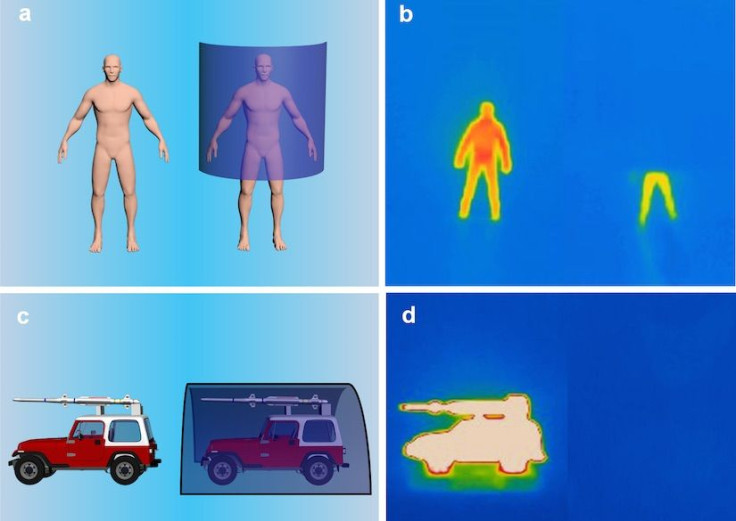New ‘Stealth’ Sheet Cloaks People, Vehicles From Infrared Cameras

A group of researchers invented a stealthy sheet, which, when wrapped around an object or individual, can hide them completely from the prying eyes of modern-day drones.
The unique invisibility cloak, developed by researchers at the University of Wisconsin-Madison, uses a material commonly used in solar cells — called black silicon — to absorb all the heat a tank or military vehicle can emit.
Under normal conditions, this heat is emitted as infrared light, which cameras equipped with modern-day drones can easily detect. They can find the target even when it’s too dark or foggy in the field. However, when the object or person in question is cloaked with the new sheet, the infrared emission is trapped by the material in real time and they practically become invisible to the drone sensor.
The new sheet, which is still a prototype, is just as thick as ten sheets of paper — approximately one millimeter wide — and can absorb a whopping 94 percent of infrared light emitted by the cloaked object, including the wavelength of light emitted at human body temperature.
This marks a major improvement over other technologies that are used to limit the heat emitted in order to render an object invisible in front of infrared cameras.
“What we have shown is an ultrathin stealth ‘sheet’,” Hongrui Jiang, one of the researchers behind the new sheet, said in a statement. “Right now, what people have is much heavier metal armor or thermal blankets.”
As the researchers described, the sheet gets these capabilities due to black silicon’s vertically pointed microscopic needles or nanowires. The minute particles, which are incorporated into the material, act as a dense trap for incoming infrared light, which fails to escape after falling onto the sheet. It just keeps reflecting back and forth within the nanowires, thus staying trapped inside the material.
Black silicon’s ability to trap visible light has been known for years, but this is the first case where the material is being leveraged to absorb infrared light for an application like this.
“We didn’t completely reinvent the whole process, but we did extend the process to much taller nanowires,” Jiang added. This way the absorptive capacity of the sheet was increased.
However, as a material this good at absorbing infrared light can heat up very quickly, the group even had to make a few air channels so that the heat captured in the sheet can be regulated accordingly.
The team is currently working to scale-up their prototype for more real-world applications, which could not just include cloaking an object from infrared cameras but also using heating elements with the sheet to create a camouflage for fooling such systems.
“You can intentionally deceive an infrared detector by presenting a false heat signature,” Jiang added in the statement. “It could conceal a tank by presenting what looks like a simple highway guardrail.”
The study, titled “Broadband and Ultrathin Infrared Stealth Sheets,” was published June 15 in the journal Advanced Engineering Materials.
© Copyright IBTimes 2024. All rights reserved.





















